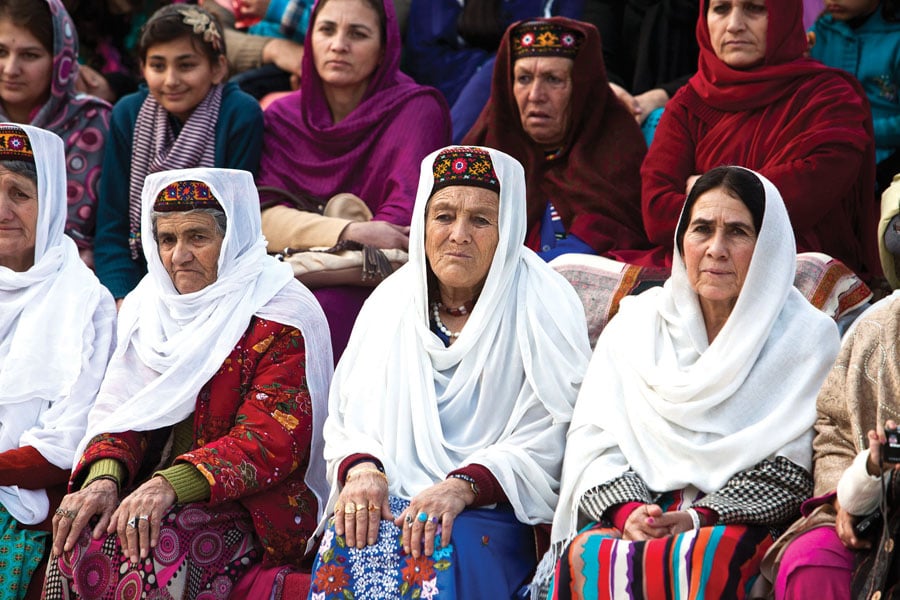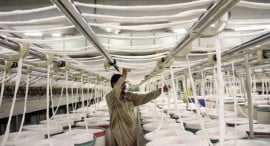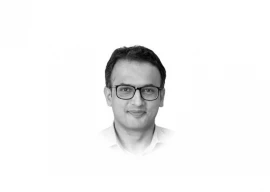
ISLAMABAD: As cultural ideals shift towards global integration, the burden of upholding local languages falls squarely on older generations, perhaps unprepared to battle with the changing landscape that moulds the aspirations of young Pakistanis. Connected through an expansive online world offering glimpses into cultures far-removed from their own realities, this cohort of future leaders sees little awe in clinging on to the past.
Long-identified within UNESCO’s Red Book of Endangered Languages, the distinct indigenous sounds that distinguish the upper, middle and lower regions of Gilgit-Baltistan, have lingered on through historical and patriotic tales perpetuated by grandmothers through delicate verse, emotive music and dance.
Strung with a similar resilience, the Initiative for the Preservation and Promotion of Pamiri Arts and Culture (IPPAC) — formed two years ago — organized a two-day cultural event to mark National Mother Language Day at the Shakarparian Open Air Theatre in Islamabad.

With the aim of promoting vernacular through traditional music and mushaira, the event, which began on Saturday, drew a large crowd.
“We want to inject local culture back into the youth through the platform of music,” shared D.W. Baig, Director, IPPAC, suggesting that in order to sustain tradition unique to mountain-dwelling communities — especially for those who have migrated to cities — there was a need to reinforce culture through such events that showcased the diversity of language and talent within the region. Baig feels that in order to engage the youth, languages slowly making their way to the gallows must be revived using platforms that are prescient of this generation.
“Mein likhta raha yahan, aur woh miltay rahay wahan,” perched on a piece of carpet laid out on the concrete stage, Ehsan-ullah’s romantic verse rounded up in stomach-punching flippancy, as he evoked a love-sick writer whose letters made little room in the heart of its recipient, unknowingly prompting a third romance with the mailman. Nearby, two young men in skinny jeans and sweaters were thoroughly amused at the limericks.
“We have to keep pace with the world if we want to achieve anything,” shared 18-year-old Adnan Mubarik, who calls Karimabad home, though has been schooled in Islamabad for lack of educational opportunity in his native Hunza.
“Our grandmothers did not go to school, and so there is certain ambivalence between our ideals and their yearning to pass on their heritage in its rigid entirety,” quipped Mubarik, adding that with little opportunity to look forward to after completing studies, a large proportion of the youth was more likely to seek jobs in urban areas or to move abroad and 24-year-old Farzana Najib reflects this aspiration.

“These events propel us closer, expose us to the talents of our people and encourage us to cherish the diverse offerings of our region,” expressed Najib, who recently graduated with a Bachelor degree in Education, a subject seemingly at the heart of most students from the region, and wishes to pursue a Masters abroad.
According to Amir Hussain, an Islamabad-based activist originally from lower Hunza, ethnic diversity can unify communities across the board just as easily as they can push nations into the writ of vulnerability. Creative use of diversity, through cultural events and inter-communal dialogue can elevate ethnic differences to the status of a powerful tool with the ability to bring about social harmony.
“Unfortunately the government is not invested in art and culture because it does not cognize its importance as a tool for social change,” expressed Hussain, explaining that as technology defines language, the only way forward in sustaining language was to focus on development and evolution.
Environmentalist Jahanzeb Murad, however, sees threat in geographic space.
“As populations are increasing and space remains the same, lingual and ethnic diversity is creating rivalries,” He shared, adding that food insecurity, climate change, dwindling water-distribution and the onslaught of unplanned mega projects was injecting a sense of competition in resources, in turn destroying the notion of diversity and co-existence.
In GB, the music – consisting of sitar, sarodh and predominately dhol — is captive to the submissive, yet resolute, gestures of dancers who are never shy to form a growing circle, collecting rolled banknotes in the folds of their woolen hats to ward off the evil eye. The event showcased seven different dialects from the region including Khowar, Balti, Shina, Bruscheski, Wakhi and Domaki.
Published in The Express Tribune, February 24th, 2014.















































COMMENTS
Comments are moderated and generally will be posted if they are on-topic and not abusive.
For more information, please see our Comments FAQ